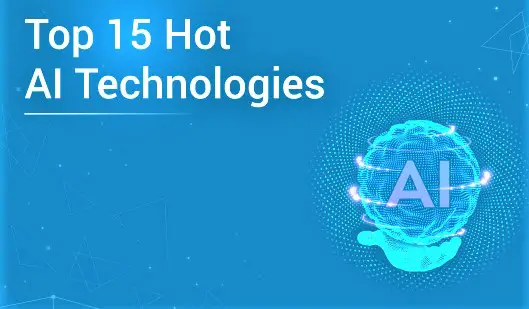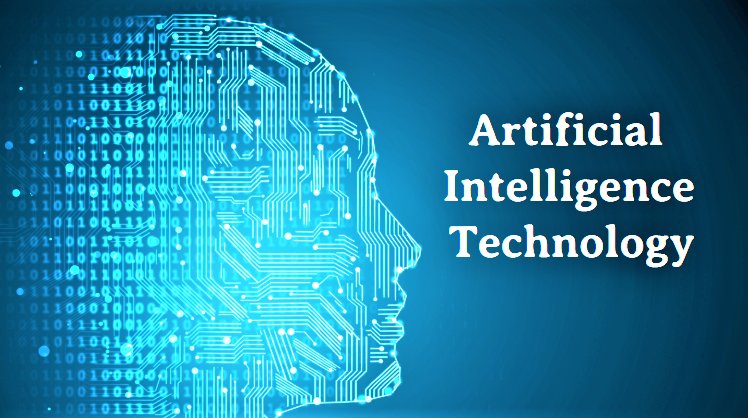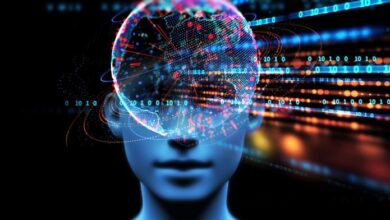Top 15 Hot Artificial Intelligence Technologies -Kat Technical
15 Latest Developments in Hot Artificial Intelligence in 2023

Hot Artificial Intelligence: AI-powered virtual agents can simulate human interactions through text or voice. They use natural language processing (NLP), speech recognition, and contextual understanding to deliver individualized, multilingual, and emotion-aware responses. They forecast an improvement in human-machine interactions in the future with applications spanning industries, including IoT integration and ethical considerations.

Artificial Intelligence (AI) has rapidly transformed the technological landscape, with virtual agents being one of its most intriguing applications. Virtual agents, also known as chatbots or conversational agents, are AI-driven systems designed to simulate human-like interactions through text or voice. They have gained significant traction across various industries, revolutionizing customer service, business operations, and user experiences. In this article, we will delve into the top 15 hot AI technologies in the realm of virtual agents.
Natural Language Processing (NLP):
NLP forms the foundation of virtual agents, enabling them to understand, process, and generate human language. Advances in NLP, including sentiment analysis, entity recognition, and language generation, have empowered virtual agents to engage in more sophisticated conversations.
Speech Recognition:
Speech recognition technology has evolved to the point where virtual agents can accurately transcribe spoken language into text, allowing for seamless voice interactions between users and machines.
Contextual Understanding:
Modern virtual agents excel at interpreting context from ongoing conversations, enabling them to provide relevant responses and maintain coherent dialogue.
Emotional Intelligence:
AI is progressing towards imbuing virtual agents with emotional intelligence, enabling them to recognize and respond to human emotions, and enhancing user engagement and satisfaction.
Multilingual Capabilities:
Virtual agents can now communicate in multiple languages, breaking down language barriers and expanding their global applicability.
Personalization and User Profiling:
AI-powered virtual agents can analyze user preferences, behaviors, and past interactions to deliver personalized responses and recommendations, creating a more tailored user experience.
Omni-channel Integration:
Virtual agents seamlessly transition across various communication channels such as websites, social media, messaging apps, and more, ensuring consistent interactions regardless of the platform.
Visual Interaction:
Advancements in computer vision have enabled virtual agents to process visual information, enhancing their ability to understand and respond to images and videos.
Conversational Design:
The art of designing effective conversations between humans and virtual agents has gained prominence, focusing on creating natural and engaging interactions.
Knowledge Graph Integration:
Integrating knowledge graphs into virtual agents enhances their ability to retrieve and present structured information, improving the accuracy of responses.
Transfer Learning:
Virtual agents can leverage pre-trained models and fine-tune them for specific tasks, accelerating development and improving performance.
Continuous Learning:
AI technologies enable virtual agents to learn from each interaction, gradually improving their responses and becoming more adept at handling complex queries.
Voice Cloning:
Voice cloning technology allows virtual agents to emulate specific voices, adding a personalized touch to interactions.
Integration with IoT Devices:
Virtual agents can control and communicate with Internet of Things (IoT) devices, enabling users to manage their smart homes or offices through voice commands.
Ethical and Bias Mitigation:
As virtual agents become more integrated into daily life, addressing ethical concerns and mitigating biases in AI interactions have become critical areas of development.

Conclusion:
The evolution of virtual agents powered by artificial intelligence has drastically transformed the way humans interact with technology. These top 15 AI technologies have contributed to creating more intelligent, empathetic, and versatile virtual agents that offer enhanced user experiences across a wide range of applications. As AI continues to advance, we can anticipate even more exciting developments in the field of virtual agents, shaping the future of human-machine interactions.
frequently asked questions
What are virtual agents in the context of Artificial Intelligence?
Virtual agents, also known as chatbots or conversational agents, are AI-driven software programs that simulate human-like interactions through text or voice. They are designed to engage in conversations with users, answer questions, provide information, and perform tasks autonomously.
How do virtual agents work?
Virtual agents use a combination of Natural Language Processing (NLP), machine learning, and other AI techniques to understand user input, process language, and generate appropriate responses. They analyze context, intent, and user preferences to deliver relevant and accurate interactions.
What industries are benefiting from virtual agents?
Virtual agents have found applications across various industries, including customer service, healthcare, finance, e-commerce, education, and more. They help streamline processes, improve user experiences, and provide efficient support.
How are virtual agents trained to understand different languages?
Virtual agents are trained on large datasets containing multilingual text. They use techniques like machine translation, cross-lingual embeddings, and transfer learning to understand and respond in different languages.
Can virtual agents recognize emotions in users?
Advancements in AI have enabled virtual agents to recognize certain emotions in users based on their text or voice tone. While they can detect emotions to some extent, full emotional intelligence is still a developing area of research.
Are virtual agents capable of learning over time?
Yes, many virtual agents are designed for continuous learning. They analyze user interactions and feedback to improve their responses and performance over time. This process is known as machine learning or reinforcement learning.
How do virtual agents integrate with other technologies like IoT devices?
Virtual agents can communicate with IoT devices through APIs (Application Programming Interfaces) or integration platforms. Users can interact with virtual agents to control and manage their smart devices, such as thermostats, lights, and security systems.
What is voice cloning, and how is it used in virtual agents?
Voice cloning is the process of creating a digital replica of a person’s voice. Virtual agents use voice cloning to provide a personalized touch to interactions, making the conversation feel more natural and relatable.
What ethical considerations are associated with virtual agents?
Ethical concerns include issues like privacy, data security, bias in AI responses, transparency, and the potential for technology to impersonate humans. Developers are working to address these concerns and ensure responsible AI usage.
What does the future hold for virtual agents and AI?
The future of virtual agents is promising. As AI technology advances, virtual agents will become more sophisticated, capable of understanding context, emotions, and complex tasks. They will continue to revolutionize how humans interact with machines and play a vital role in various industries.



